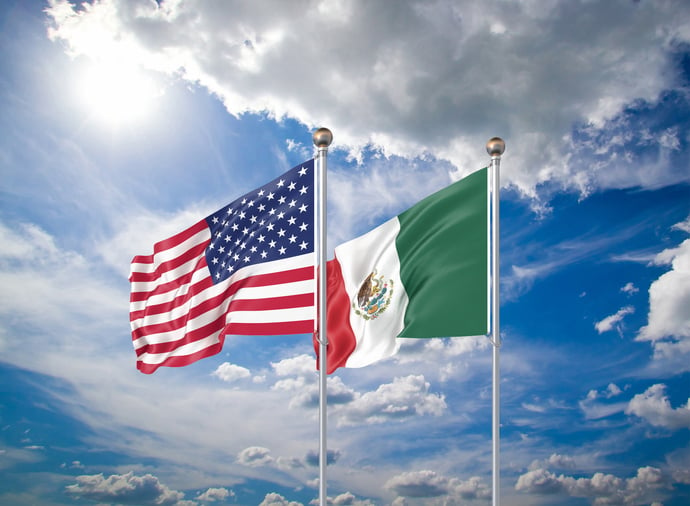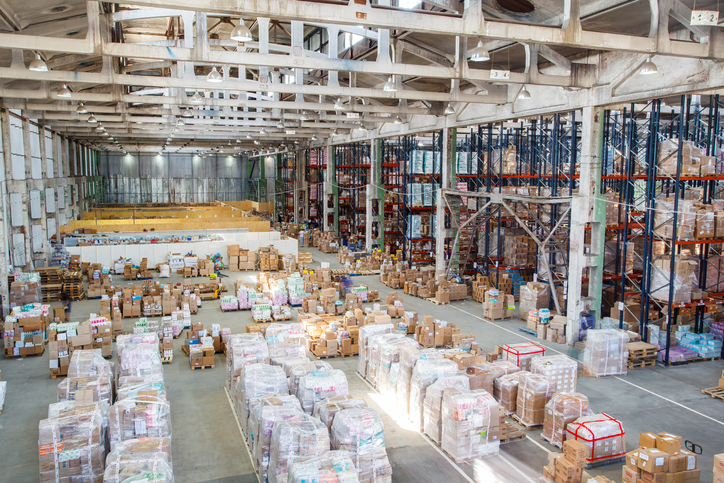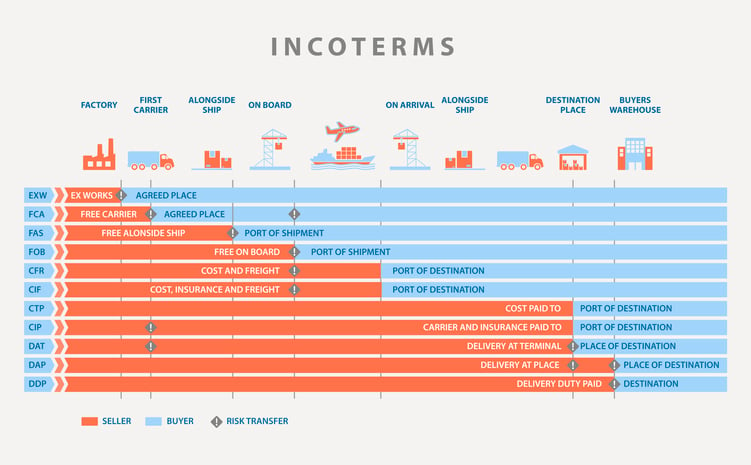In recent years, Mexico has consistently ranked as one of the top trading partners of the United States, with a significant portion of U.S. exports destined for Mexican markets. In 2022, the total trade value between the two countries reached a staggering $779.3 billion. This trade relationship has facilitated the exchange of goods and fostered economic growth and integration between the neighboring countries.
Today, Mexico remains the largest provider of goods to the United States and the second-largest export market for US products.
A Closer Look at US Exports to Mexico
As of 2023, US exports to Mexico stood at an impressive $243 billion, making Mexico the United States’ second-largest export destination out of 220 global partners. This robust exchange includes everything from machinery and vehicles to agricultural goods, electronics, and services—reflecting the breadth and depth of this critical economic partnership.
While the US maintains a strong presence in the Mexican market, the competitive landscape is dynamic. Trade data reveals that, outside of unique cases like Guam, most regional partners import more from the US than from Mexico. This underscores the strength of American products and services in the region.
This ongoing trade not only bolsters the economies of both nations but also supports millions of jobs and further cements the vital economic ties across North America.
The Annual Growth Rate of US-Mexico Trade
One statistic that stands out is the steady increase in trade volume between the two countries. Over the past five years, the value of trade exchanged with Mexico has grown at an average annual rate of about 6.2%. This sustained growth highlights the deepening economic ties and the ongoing demand for American and Mexican goods on both sides of the border.
Recent U.S.–Mexico Trade Snapshot
Trade between the United States and Mexico continues to demonstrate steady momentum. In November 2024, Mexico exported roughly $35 billion in goods to the U.S. and imported $18.1 billion in American products, resulting in a trade surplus of $16.9 billion for Mexico.
This performance represents a 3.5% increase in Mexican exports from the previous year, while U.S. exports remained stable. The data highlights the ongoing strength of North American trade and the resilience of this bilateral relationship amid global economic shifts.
Understanding the Importance of Exports to Mexico for the US Economy
The trade relationship between the two nations stands as one of the most significant and dynamic in the world, fostering economic growth and collaboration between the two nations.
Here is the list of reasons:
- The trade volume is substantial, with billions of dollars exchanged in goods and services annually as of 2021.
- Exporting goods and services supports millions of American jobs across manufacturing, agriculture, technology, and services. These jobs contribute to the overall economic growth and stability of the U.S. economy.
- It provides American businesses access to a vast consumer market of over 120 million people, facilitating the expansion of customer bases and revenue streams.
- The proximity makes it a cost-effective and efficient trading partner. Many U.S. companies use Mexico as a manufacturing base due to lower labor costs and favorable trade agreements such as NAFTA or its successor, USMCA.
- Mexico is deeply integrated into the supply chains of many U.S. industries. Components and parts produced in Mexico are often used in the manufacturing processes of American companies, enhancing efficiency and reducing production costs, especially in trade with Mexico for agricultural products.
As trade evolves and expands, leveraging the U.S.-Mexico partnership's close ties and strategic advantages will remain crucial for fostering prosperity and innovation across North America.
Comparing Economic Complexity: Mexico vs. United States
Both Mexico and the United States demonstrate strong economic complexity—measured by the diversity and sophistication of their production and trade capabilities.
The U.S. ranks among the top ten globally, driven by its advanced industries like aerospace, pharmaceuticals, and technology. Its large, innovative economy supports high-value exports and research-driven growth.
Mexico, meanwhile, holds a solid position within the top quarter of global rankings. Understanding what does Mexico export helps illustrate this strength—its manufacturing base, led by automotive, electronics, and aerospace sectors, continues to expand and diversify. These industries define what does Mexico export most to global markets, reflecting rising industrial capacity and integration with international value chains.
Together, these complementary economies form a balanced partnership, where U.S. innovation and what does Mexico export in manufacturing drive steady cross-border trade and mutual growth.
Following Mexico’s growing manufacturing sophistication, it’s also important to understand how its trade agreements influence what does Mexico export and how these partnerships shape global competitiveness.
Major Trade Agreements: Expanding Mexico’s Global Reach
Mexico’s extensive trade network has become a cornerstone of its global economic strategy. These agreements directly impact what does Mexico export, broadening access to markets across North America, Europe, Asia, and South America.
Through partnerships like the United States–Mexico–Canada Agreement (USMCA) and the Comprehensive and Progressive Agreement for Trans-Pacific Partnership (CPTPP), Mexico strengthens its export position in automotive, electronics, and agriculture. The country’s involvement in over 50 international trade deals also fosters new opportunities in emerging sectors like renewable energy and medical manufacturing.
These alliances continue to define what does Mexico export, supporting industrial diversity, foreign investment, and sustainable growth across major trade corridors.
Current State of Mexico's Trade Relationships and Agreements
Mexico holds a robust position in global trade, underpinned by numerous strategic trade agreements that foster economic growth and international cooperation. Understanding what does Mexico export reveals how these partnerships strengthen its role across industries such as automotive, electronics, and agriculture. Its trade relationships extend across multiple continents, with agreements designed to expand what does Mexico export to new markets, increase foreign investment, and promote regional economic integration.
While trade volumes show impressive growth, long-term success depends on how effectively both nations manage risk and capitalize on emerging opportunities tied to what does Mexico export and how U.S. businesses respond.
Strategies for Managing Risks and Seizing Opportunities in U.S.–Mexico Trade
Understanding what does Mexico export helps companies anticipate global shifts and identify trade vulnerabilities early. Businesses operating between the two countries must balance opportunities in Mexico’s manufacturing strength with challenges like currency changes, political factors, and cross-border logistics.
Key strategies include:
- Diversify suppliers: Reduces dependency on a single export category or market.
- Monitor trade policies: Stay current with updates that influence what does Mexico export and how goods move between regions.
- Enhance visibility: Use technology to track real-time shipment activity and reduce uncertainty.
- Scenario planning: Prepare for tariff or cost changes tied to the evolving makeup of what does Mexico export.
Proactive planning helps both sides strengthen trade relationships and respond to market changes effectively.
How Have Mexico’s Exports to the United States Changed Over the Past Year?
Mexico’s exports to the United States have shown consistent growth over the past year, with manufacturing and technology sectors driving much of this momentum. A closer look at what does Mexico export reveals that automotive parts, computers, and industrial machinery remain top-performing categories. These core industries underscore what does Mexico export most frequently and highlight its role as a key production hub in North America.
Top Mexican Exports to the United States
The country is a powerhouse when it comes to supplying goods to its northern neighbor, with a strong focus on the automotive and tech sectors. The leading products exported from the nation to the U.S. include:
- Cars: Representing a major share, passenger vehicles drive significant trade, with exports totaling nearly $45 billion in 2023 alone.
- Automotive Parts and Accessories: Essential components for everything from sedans to SUVs, these exports reached over $35 billion, fueling North American vehicle manufacturing.
- Delivery Trucks: Serving a crucial role for logistics and commerce, the nation shipped delivery trucks valued at over $26 billion.
- Computers and Electronics: As a key hub in electronics, the country continued exporting billions in computers and related tech to American businesses and households.
These top exports underscore the nation’s pivotal position in North American supply chains, particularly in automotive and technology sectors, and highlight the depth of integration between the two economies.
Comparing Mexico’s Export Partners: Who Prefers Mexican Goods?
While the United States remains the country’s dominant trading partner, few nations import more from it than from the U.S. The global map of trade clearly favors American exports, illustrating the scale and reach of U.S. products across major regions.
Smaller economies, such as Guam, represent rare exceptions where Mexican exports slightly exceed U.S. imports. However, the overwhelming majority of global partners continue to rely on U.S. goods and services, reflecting America’s broad industrial and commercial influence.
What does the US Export to Mexico?
The United States exports a diverse mix of goods and services, maintaining one of the strongest trade partnerships worldwide.
Key Drivers of Mexico’s Imports from the United States
Recent years have seen steady growth in key categories driving the nation’s import demand. Automotive parts and components remain dominant, supported by deep industry integration between both nations. Industrial machinery and equipment—like valves—have also expanded, fueling the country’s manufacturing and infrastructure development. Meanwhile, electric batteries show rising potential, reflecting the global shift toward electric vehicles and cleaner technologies.
Together, these categories highlight a dynamic, interconnected trade relationship where innovation, manufacturing, and technology continue to strengthen bilateral growth.
Comparative Advantages That Define Bilateral Trade
The nation’s competitive edge lies in its robust manufacturing base—especially in cars, delivery trucks, and vehicle components—supported by skilled labor and strong logistics networks.
The United States, on the other hand, leads in refined petroleum, natural gas, and advanced manufacturing. Its energy exports supply much of its southern neighbor’s domestic needs, while U.S.-made parts sustain local vehicle production.
This exchange—automotive goods moving north, energy and technology flowing south—illustrates a well-balanced partnership that continues to fuel economic efficiency and mutual prosperity across North America.
Examples of Key Export Sectors
- Automotive Exports: Vehicles, parts, and machinery make up a significant portion of exports.
- Agricultural Goods: Grains, soybeans, meat, and processed foods support both U.S. and Mexican economies.
- Electronics and Technology: Televisions, computers, smartphones, and other electronic devices drive technological integration.
- Industrial Machinery: Construction equipment, agricultural machinery, and manufacturing machinery boost productivity.
- Petroleum Products: Gasoline, diesel, and refined petroleum exports meet Mexico's energy needs.
- Chemicals and Pharmaceuticals: Industrial chemicals, fertilizers, and medical supplies support diverse industries.
- Medical Equipment and Devices: Surgical tools, diagnostics, and medical devices enhance Mexico's healthcare infrastructure.
- Aerospace Components: Aircraft parts and equipment strengthen the nation’s aerospace manufacturing.
- Plastics and Rubber Products: Includes resins, containers, and tires for various industries.
- Iron and Steel: Essential for the country’s construction and manufacturing sectors.
- Mineral Fuels: Natural gas and coal support energy production.
- Textiles and Apparel: Fabrics, apparel, and accessories contribute to the nation’s fashion and industrial sectors.
- Optical and Precision Instruments: Instruments and tools for medical and industrial use.
- Paper and Wood Products: Lumber, paperboard, and pulp supply the country’s manufacturing needs.
- Consumer Goods: Furniture, toys, games, and sporting goods serve domestic and regional markets.
Recent Growth and Historical Trends in U.S.–Mexico Trade
U.S. exports to Mexico have grown steadily, led by sectors like automotive parts, industrial equipment, and electric batteries. Over time, these categories have remained core to bilateral commerce, reflecting both nations’ interdependence in manufacturing and energy.
Historical trade data reveals that while some industries—like agriculture and electronics—fluctuate with market demand, the overall direction of trade remains upward. Both countries continue to strengthen cross-border supply chains, diversify export categories, and adapt to global market shifts with remarkable agility.
How Export Potential is Estimated
Estimating export potential between Mexico and the United States involves analyzing data, trade patterns, and product compatibility. Economists often rely on the gravity model of trade, which compares each country’s economic size—such as GDP and purchasing power—alongside their proximity and existing trade flows.
Analysts also evaluate historical performance and product relationships to identify emerging opportunities. For instance, if medical devices or automotive components already perform well in similar markets, they likely hold strong export potential between these two nations.
By combining market data, industry trends, and regional demand, experts can pinpoint which sectors are most likely to grow—helping businesses make informed, strategic trade decisions.
Key Drivers of Growth in Mexico’s Exports to the US
Recent data highlights several product categories fueling the year-on-year expansion of Mexico’s exports to the United States. Notably, computers saw a substantial increase, contributing significantly to overall export growth. Office machine parts also made a remarkable surge, reflecting heightened demand in the technology and business equipment sectors. Additionally, the automotive industry remained strong, with delivery trucks representing an important area of export growth.
These trends underscore Mexico’s evolving role as a manufacturing and technology hub, supplying a diverse array of goods to meet the needs of US industries and consumers.
While current export data reflects healthy momentum, new policy shifts could reshape how industries operate and influence what does Mexico export moving forward.
What Impact Could New U.S. and Mexican Tariffs Have on Key Sectors?
Tariff policy changes between the U.S. and Mexico could significantly affect what does Mexico export, especially in highly integrated industries such as automotive, agriculture, and technology.
- Automotive: Higher tariffs may raise production costs and slow cross-border vehicle exports, directly altering what does Mexico export to U.S. manufacturers.
- Agriculture: Duties on grains, livestock, or food products could reduce competitiveness and reshape what does Mexico export to meet domestic demand instead.
- Technology and Electronics: Tariffs on parts and components may impact manufacturing supply chains, shifting where and how what does Mexico export develops in tech sectors.
These potential changes highlight the need for adaptive trade strategies, allowing businesses to protect operations while identifying new growth areas in evolving markets.
Tariffs rarely shift in isolation—government agencies on both sides of the border are actively responding to ensure trade stability and balance in what does Mexico export across key markets.
How Are Officials Responding to Proposed Tariffs?
Officials in both countries are pursuing measures to maintain stable trade relations and minimize the impact on what does Mexico export. In the U.S., policymakers are reviewing sector-specific exemptions for essential goods, while Mexico’s trade ministry is negotiating tariff adjustments to protect critical export categories such as vehicles and electronics.
Both governments continue to emphasize collaboration through USMCA frameworks and bilateral discussions, aiming to preserve supply chain continuity. These diplomatic responses not only safeguard what does Mexico export but also reinforce North America’s position as one of the world’s most interconnected and resilient trade regions.
Exploring Trade Data by Region and Product
Trade between the U.S. and Mexico varies by region and sector. States like Texas, California, and Michigan handle the bulk of shipments, driven by industries such as automotive, electronics, and agriculture.
Interactive data platforms now allow analysts and businesses to view trade flows by region or product, revealing local strengths and emerging opportunities. Whether it’s tracking agricultural shipments or manufacturing inputs, these insights help identify growth potential across North America.
Breakdown of Import Shipments from Mexico to the United States
When examining shipments from Mexico to the United States, the data can be organized in a few key ways to reveal trade patterns and help businesses identify opportunities.
- By Product: Imports from Mexico include a diverse array of products. Key categories include automotive goods (such as cars and auto parts), electronics, agricultural products, machinery, and petroleum products. Each of these sectors represents a significant share of cross-border trade, reflecting the complementary strengths of both economies.
- By Company: The landscape is also shaped by the top importers, which range from major automotive manufacturers and electronics giants to retailers and distributors handling agricultural or consumer goods. This company-level view highlights which sectors are most active and illustrates the flow of supply chains between the two countries.
To get a clearer picture, company-level data for import shipments reveals not just the volume, but also the diversity of businesses involved in cross-border trade. Shipments are often categorized by imported product type, allowing you to quickly spot trends—such as a surge in automotive parts, electronics, or fresh produce. Alongside the breakdown by company, shipment destinations are mapped by U.S. state, providing insight into regional demand and distribution hubs.
For a hands-on approach, interactive breakdowns let you dive deeper: select a product category to see which companies are most active, or click on a destination state to trace supply routes and see which businesses serve those areas. This granular perspective helps identify the key players and emerging trends in U.S.–Mexico trade, whether you're tracking established supply chains or scouting for new opportunities.
- By Destination State: Finally, shipments are distributed across the United States, with states like Texas, California, Michigan, and Illinois often receiving the highest volumes. These locations serve as key hubs for automotive assembly, electronics manufacturing, agriculture, and logistics, underscoring the regional dynamics of U.S.-Mexico trade.
Through this lens, you can see not only what goods are moving across the border but also which businesses and regions are most heavily involved in this dynamic trading relationship.
The Growth of Digital Trade Between Mexico and the United States
Digital trade is reshaping how businesses exchange value across borders. It includes downloadable goods like e-books, movies, and music, as well as digital services such as cloud computing, online advertising, and software subscriptions.
Unlike physical goods, digital exports move electronically but have a powerful economic impact. Revenue from U.S. digital platforms, for example, counts as exports when used by Mexican consumers. As more industries adopt digital tools and remote solutions, cross-border digital transactions will continue to expand—strengthening North America’s innovation-driven economy.
Challenges faced by US Exporters in Mexico
Venturing into the Mexican market presents US exporters with many challenges, ranging from regulatory hurdles to logistical complexities and cultural differences.
- US exporters must navigate Mexico's complex regulatory landscape, demanding meticulous attention to compliance with customs procedures, documentation requirements, and product standards.
- Navigating tariffs and trade barriers poses ongoing challenges, impacting export costs and the competitiveness of US products in the Mexican market.
- Language and cultural disparities complicate communication and relationship-building efforts, underscoring the importance of cultural sensitivity and effective communication strategies.
- Infrastructure deficiencies, such as congested ports and inadequate transportation networks, contribute to delays and increased shipping costs, affecting the timely delivery of goods.
- Political and economic uncertainties and concerns about intellectual property protection and corruption add complexity to the business environment, necessitating robust risk management strategies.
- Market access restrictions, competition from local producers, and supply chain disruptions present formidable obstacles for US exporters, requiring resilient supply chain strategies and adaptability to regulatory changes.
Successfully navigating these challenges demands a comprehensive approach, including regulatory compliance, cultural understanding, logistical efficiency, and risk management strategies, to succeed in the dynamic Mexican market.
Import regulations, trade data analysis, considerations for foreign investment, and understanding trade agreements like the USMCA, which entered into force, are vital elements for US exporters to thrive in the Mexican market.
Analyzing Trade Data to Forecast Future Flows
Estimating future trade flows between Mexico and the United States involves more than tracking current exports and imports—it's a nuanced process that blends data analysis with an understanding of product relationships and global trends.
A widely used approach is to apply models that assess not just the volume but also the types and destinations of traded goods. Analysts often look at patterns in product similarity (for example, how exporting vehicle parts might link to exporting finished automobiles) and market compatibility between the two countries. These models factor in product affinities, logistical routes, and demand trends to gain a fuller picture of potential trade growth.
In practice, this means:
- Identifying Related Products: By examining which products tend to be exported together, analysts can spot emerging opportunities. For instance, a rise in electronics exports could signal future increases in component or software trade.
- Geographic and Sector Similarity: Understanding regional strengths and matching them with industrial needs—such as pairing Mexico’s manufacturing hubs with U.S. consumer markets—helps forecast where trade relationships can deepen.
- Gravity Model Insights: Economists utilize advanced versions of the gravity model, which consider both economic size and proximity, to predict the direction and magnitude of trade flows with greater accuracy. This method allows for estimating how changes (like tariffs or trade agreements) might shift trade patterns.
Using these layered analyses, businesses and policymakers can not only interpret historical data but also make informed projections, shaping strategies for investment, supply chain adjustments, and partnership development.
How have exports benefited Mexico's economy?
Mexico's economy has seen significant benefits from its robust export sector. The allure of Mexico's economic landscape is becoming increasingly attractive to numerous businesses worldwide, prompting them to relocate their operations to the country. This trend ensures that Mexico's export-driven gains are sustainable over the long term.
Key factors contributing to the economy include:
1. Natural Resource Wealth
Mexico's rich deposits of natural resources have been instrumental in attracting industries reliant on these materials, facilitating a surge in export activities.
2. Developed Infrastructure
With a well-established infrastructure in place, Mexico supports efficient production and distribution processes, enhancing its appeal as an export hub.
3. Extensive Trade Agreements
Mexico's strategic trade relationships span globally, reducing barriers and increasing access to international markets. This network of agreements has dramatically expanded the reach of Mexico's exports, bolstering economic growth through increased trade volumes.
Future Outlook for US Exports to Mexico: Seizing Opportunities Ahead
Looking ahead, US agricultural exports, including corn, play a significant role in US-Mexico trade. By embracing effective strategies, US exporters can leverage the close cultural and economic ties between the two nations.
To seize the full potential of this trade opportunity, businesses must act decisively and implement these strategies to navigate the evolving landscape of US-Mexico trade and investment provisions and business services.
Discover how Visigistics can optimize your trade operations, two-way trade, and export strategies. Visit our website and contact us today for more information!
Frequently Asked Questions
What are the main agricultural exports from the United States?
The agricultural exports from the United States encompass a variety of products, including grains, beef, pork, dairy, fruit, and vegetables.
How do trade agreements such as NAFTA and USMCA impact exports?
The North American Free Trade Agreement (NAFTA) and the United States-Mexico-Canada Agreement (USMCA) have played critical roles in facilitating trade. These agreements have reduced barriers and tariffs, enabling a smoother flow of goods between the two countries.
What is the significance of the strong economic ties between the US and Mexico?
The deep economic ties between the two partner countries make the latter a natural market for American exports. This strong economic relationship is founded on a history of two-way trade in goods and services that benefits both nations.
How does trade directly and indirectly support both the US and Mexico?
Trade directly and indirectly supports both countries' jobs, economic growth, and innovation. This bilateral relationship strengthens industries in various sectors.
What position does Mexico hold in terms of US export destinations?
Mexico is the US's first or second largest export market. The geographic proximity, shared borders, and trade relations make Mexico a crucial partner for the US.
How does the United States support trade relations with Mexico?
The office of the United States Trade Representative actively works to enhance trade relations with Mexico and Canada by negotiating agreements that benefit American businesses and consumers. These efforts aim to promote fair and reciprocal trade practices.
What role does the USDA play in promoting US agricultural exports?
The USDA Foreign Agricultural Service is a critical player in promoting and facilitating exports and imports of agricultural products.





